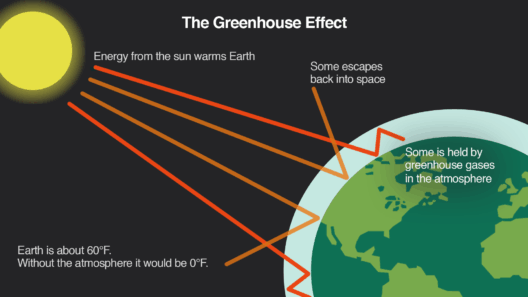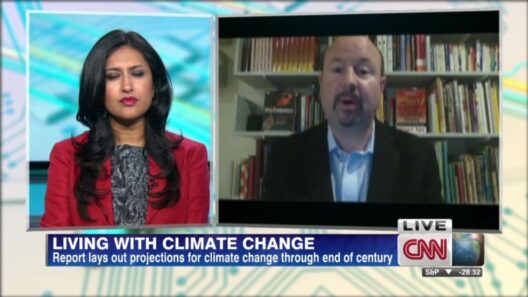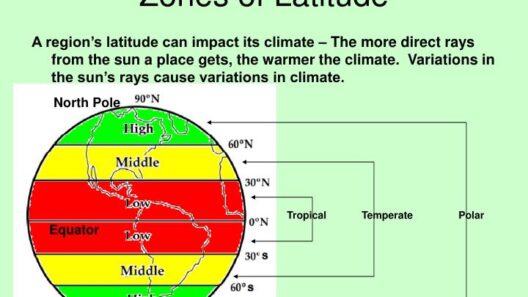In contemporary discourse surrounding climate change, an intriguing and often misunderstood question arises: Does climate change cause earthquakes? This inquiry, while seemingly absurd to some, entices both scientists and laypersons alike. The very notion of climate phenomena inducing geological upheaval captivates our collective imagination, drawing connections between two great forces of nature—weather and tectonic activity. To dissect this complex relationship, one must navigate the realms of scientific inquiry, geological understanding, and the myths that permeate popular culture.
The Earth’s Crust: A Dance of Tectonic Plates
Before delving into the relationship between climate change and earthquakes, one must first understand the geodynamic processes that govern our planet’s crust. The Earth’s lithosphere is comprised of a mosaic of tectonic plates that float on the semi-fluid asthenosphere below. Their movements—whether converging, diverging, or sliding past each other—are responsible for generating seismic activity.
Earthquakes occur primarily at plate boundaries, where immense stress builds up due to the continuous motion of these plates. When the stress exceeds the frictional resistance, a sudden release of energy manifests as an earthquake. This explanation lies at the heart of seismology, yet links to climate change complicate this straightforward narrative. How could fluctuations in atmospheric temperature or oceanic currents influence such subterranean processes?
Theoretical Connections: Climate Impact on Geological Activity
Some scientists speculate that climate change might have indirect effects on tectonic activity. One mechanism posited involves glacial melting. When heavy ice sheets—like those in Greenland and Antarctica—diminish under rising global temperatures, the immense weight they impose on the crust is alleviated. This deglaciation can lead to isostatic rebound, where the lithosphere gradually adjusts, potentially triggering earthquakes.
Moreover, altered precipitation patterns can impact the pressure within tectonic systems. Regions experiencing increased rainfall may see augmented water infiltration into fault lines, altering the stress conditions and potentially affecting seismic behavior. Recent studies have indicated that hydraulic forces from water accumulation can indeed influence localized seismicity. Nevertheless, while these theoretical connections yield tantalizing possibilities, they do not conclusively establish a causal relationship between climate change and seismic events.
Debunking Myths: The Misinformation Conundrum
In the era of information overload, misunderstandings about climate and seismic activity proliferate. One prevalent myth is the belief that increased global temperatures directly result in more frequent or intense earthquakes. This oversimplification ignores the complexities of geological processes. Earthquakes are primarily driven by tectonic forces rather than atmospheric changes.
Furthermore, there is a distinct danger in propagating myths linking climate change directly to earthquakes. Such assertions can detract from the salient, science-backed discussions surrounding environmental degradation, biodiversity loss, and the catastrophic impacts of global warming. It is essential to foster an understanding rooted in evidence and critical thinking, rather than sensationalism.
Earthquake Prediction: The Inextricable Link to Climate Events
While determining the exact timing and location of earthquakes remains elusive, scientists have made strides in creating models that can incorporate various environmental factors. Interestingly, some research suggests a correlation between increased seismic activity and extreme weather events such as heavy rainfall or thawing in glaciated regions.
However, causation versus correlation must be distinguished. The observed patterns do not imply that climate change triggers earthquakes. Rather, they demonstrate that environmental conditions can interact with existing geological stressors. Thus, prediction models are advancing to account for both climatic and tectonic influences, offering a more holistic view of the Earth’s dynamics.
The Consequential Implications: Climate Change and Natural Disasters
As one contemplates the broader ramifications of climate change, it becomes evident that the consequences extend far beyond rising sea levels and ecosystem collapse. The interplay of climate phenomena and geological activity underscores the complexity of Earth’s systems. For instance, extreme weather events intensified by climate change—such as flash floods or landslides—can indirectly result in hazardous conditions that may increase the risk of earthquakes.
Moreover, as urban centers expand into seismically active zones, understanding the potential collateral impacts of climate change becomes imperative. The nexus of human activity and natural phenomena creates a precarious balance that necessitates vigilant assessment and preparedness. The increasing severity of both climate change and seismic events may compel societies to rethink infrastructure resilience and disaster preparedness strategies.
Conclusion: The Ongoing Quest for Understanding
In summation, the relationship between climate change and earthquakes is one that merits careful consideration and rigorous scientific inquiry. While there are intriguing avenues of exploration linking climate phenomena to geological processes, oversimplified conclusions must be scrutinized. A nuanced understanding is vital, nurtured by a commitment to evidence-based discussions.
As humanity grapples with the formidable challenges posed by climate change, fostering scientific literacy and critical thinking is paramount. The quest for knowledge in the interconnected realms of atmospheric and geological science promises to deepen our understanding of our planet, empowering us to navigate the future with resilience and foresight. In this endeavor, we must be vigilant against myths and committed to uncovering the truths of our dynamic Earth.








